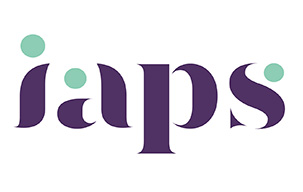This week on Portsmouth Point: Monetary Policy - What & Why?

by James M, Year 12

Monetary policy is the cornerstone for modern economics. In many respects, it is like a hammer. When wielded incorrectly and inaccurately, it may cause severe damage to the economy, like a hammer might do so to a slab of marble. However, when in the correct hands, a hammer may finely break away at the marble to create an elaborate and gorgeous statue or a strong and firm sword, in the very same manner that monetary policy can be used to create a ‘beautiful economy’. In modern terms, a beautiful economy may be constituted as one which achieves its macroeconomic objectives with as minimal trade offs as possible. For many economies, there exists three main macroeconomic objectives: full employment, growth and price stability.
In this essay, in order to gain a fuller understanding of how monetary policy works, I first will explain why states need monetary policy, by looking at changes in currency over time. Then, I will talk about how monetary policy works, through processes like changing interest rates and quantitative easing, and potential trade offs involved, as well as their impacts on macroeconomic outcomes. Finally, I will talk about how monetary decisions are made.
Why do we tend to have a central currency that holds little tangible value?
In his celebrated work, ‘The Wealth of Nations’, Adam Smith spoke about the concept of the ‘double coincidence of wants’ (Smith, 1776). In a bartering system, for a transaction to occur, both parties must desire what the other has to offer. Without this mutual desire, there would be no incentive for the exchange to occur. Why would I give up something that holds value to me for something that does not?
Austrian economist Karl Menger expanded on this idea with his concept of marketability (Smithin, 2000). In a barter economy, two parties may still find a way to trade even if neither of them possesses what the other desires. In this case, an intermediary good may be used. This can then be used at a different market in exchange for something that is desirable. In bartering systems, from which modern economies developed, various versions of currencies would form due to this easier mode of exchange. Usually, these would be some form of commodity, which could hold its value physically. Take gold, or salt. According to Menger, the more easily a good could be used in later exchange (ie. the greater its marketability), the more likely it was to develop as a currency.
It is for this reason that currencies developed all across the globe in ancient times. In the Aztec empire, cocoa beans developed as a means to ‘even out’ exchanges (Jacobson, 2001). The Romans too saw their soldiers paid their salaries in salt. Despite commodities having the advantage of marketability, their weakness lies in their portability and standardisation. Across markets, it would be very inconvenient to carry lumps of gold, or sacks of salt in order to trade. This inconvenience led to the creation of mints, which would create standardised coins for trading. Coins held their value in weight but were also fairly standard in shape, ensuring stable trading and easier transportation. Yet, coins were only effective for smaller-scale purchases. Hence, came the development of bank notes: pieces of paper representing an IOU. In gold standard adopting economies, bank notes could be exchanged for their face value in gold, silver, or other commodities which the bank may have held. Here, it was the responsibility of the bank to maintain a stable price exchange between the currency and commodities. Hence, an early version of monetary policy developed: stable currency exchange.
Trading, across regions, would happen more easily if everyone used one stable currency. In this way, individuals would quickly understand the value of what they had, assured that their purchasing power would not decrease en route to the market. But, with so many banks, each with their own notes and exchanges, how could one ensure there is economy-wide stability and unity? From here, came the development of the central bank. The Bank of England was founded in 1694, to manage government debt, and was granted monopoly notes in 1844 through the Bank Charter Act (Goodhart, Capie & Schnadt, 1994). Essentially, central banks would hold large reserves of currency and commodities. The reason for holding reserves was to ensure that the bank had enough liquidity to survive large-scale withdrawals, allowing, to an extent, currency stability. By lending to other banks, central banks could control the flow of currency and maintain exchange stability, especially through the provision of monopoly notes.
With the gold standard, the value of currency depended on two factors: the amount of money in circulation relative to gold reserves and the market value of gold. As to not damage the exchange rate, banks tended not to increase the amount of money in circulation unless they could increase their gold reserves. However, the central bank had some ability to influence money supply through lower interest rates, which would decrease the cost of borrowing and thus increase the quantity of money in circulation. However, since money supply was tied to gold reserves, central banks were limited in their flexibility. By over-issuing currency, consumers would lack confidence and exchange their currency for gold. However, this would force corrective action on behalf of the central bank to increase interest rates, to ensure there was enough gold in the reserve to back the currency (Eichengreen & Flandreau, 1997, pp. 6-7). Hence, it is easy to see how limited central banks were in relation to controlling the supply of money. For example, in 1913, the Federal Reserve Act ordered the American Federal Reserve (ie. the American central bank) to hold gold, backing at least 40% of its demand notes (Economou, Nickos & Papadamou, 2017).
The limitations of the gold standard were evident in scenarios where the government had to spend large sums of money, for example in social security payments, infrastructure projects or wartime funding. Due to the constraints of maintaining the gold standard, central banks were disincentivized from expanding the money supply as a provision for a greater budget. This was legally backed by legislation such as the Federal Reserve Act. Some governments, such as the British, needed to borrow huge sums of money to finance their war effort in WW1. Yet, due to the gold standard, an unavoidable trade off would have occurred. The central bank could lower interest rates, decreasing the cost of borrowing to allow less government debt to finance their spending. But, due to the confidence mechanism, there too would be a depletion in the gold reserves, leading to indirect deflationary pressures and in turn lower confidence. Conversely, the central bank could raise interest rates, to increase the cost of borrowing, allowing for a stable exchange rate but also deflationary pressures and decreased confidence. Thus, some argue that the gold standard was inherently deflationary. Regardless, due to the incentive for the central bank to maintain the exchange rate, there was very little inflationary control for economies under the gold standard.
However, there are exceptions to this. For example, periods of gold discovery, such as gold rushes, led to positive supply-side shocks. As the quantity of gold would increase, the quantity of money could increase, leading to inflationary pressures. But, it is important to note that these inflationary pressures could only be temporary as the effects of the shock would quickly dwindle out. In the long term, regardless of interest rates, the existence of the gold standard would lead to deflationary pressures (as there could only ever be so great a value of all the currency).
Hence, when governments needed to borrow large sums of money to finance their spending, such as in WW1 for the UK, central banks would have to ensure lower interest rates. Yet, this would have dampened consumer confidence (due to longer term inflationary pressures), leading to mass withdrawals from the banks, further dampening the economy’s ability to function. Some economists argue that it was the gold standard that significantly worsened the state of the US economy during the Great Depression. Due to bank failures, there was an incentive for citizens to withdraw from the banks and hoard gold, leading to deflationary pressures and further reduced confidence. Bound by the limited supply of gold, the central bank was unable to expand the money supply to stimulate the economy. Therefore, in 1933, the US temporarily abandoned the gold standard, to ensure that more could be done to stimulate the economy into recovery. Again, for similar reasons, the US permanently abolished the standard in 1971.
So, here we have reached a system in which there exists a central currency that has little tangible value, unbacked by a commodity. We may call this fiat money. Understanding why fiat money has developed and is used is paramount to understanding modern monetary policy. In such scenarios, economies are less bound by the quantity of commodity in reserves to fulfill its macroeconomic objectives.
What is monetary policy and how does it work?
Let us return to the principal macroeconomic objectives: price stability, growth and full employment. Monetary policies are policies which control the flow of money in an economy to achieve these objectives. There are various finer tools of monetary policy, such as quantitative easing and interest rate controls. As these policies all involve the flow of money, it is easy to see how, in the majority of all modern economies, it is the role of the central bank to execute monetary policy. Moreover, many states have decided that monetary policy must be independent of country politics, hence an independant Bank of England in 1998. The argument for making it an independent institution is that the incumbent political party may be tempted to pursue short term expansionary monetary policies ahead of elections - as these policies could lead to superficial growth and neglect the economy’s long-term stability.
So, what exactly is expansionary monetary policy and how might it be dangerous? Expansionary monetary policy are policies designed to stimulate economic growth by increasing the money supply. Take low interest rates, from which both consumers and firms can borrow money for cheaper. Thus, consumer spending and corporate investment would be encouraged, resulting in an expansion of aggregate demand. Greater economy-wide demand should lead to an increase in economic activity and national income, as buyers and sellers are more likely to spend money and sell goods. Positive demand side shocks, such as interest rate cuts, will result in greater economic growth. If unattended, this growth could result in a positive output gap, in which the economy would be operating beyond its productive potential. Some economists, like Keynes, argue that without an expansion in long term supply factors, positive output gaps may only reap upwards inflationary pressures (Keynes, 1936). With a greater quantity of money in circulation and without a decrease in the costs of production, the logical thing to do would be to increase prices, causing deflationary pressures. Here, we can see one of the key trade offs with expansionary monetary policy: increased growth (ie. increased nominal GDP) at the cost of upwards inflationary pressures.
Contrastingly, contractionary monetary policy can be used to reduce the supply of money in circulation. By increasing interest rates, there will be less incentive to borrow money and thus less reason for investors or consumers to spend their money, decreasing growth and incurring deflationary pressures. This may be necessary in cases where there is a need to curb inflation in an economy. Here we can see another trade off: decreased inflationary pressures at the cost of a decrease in nominal GDP.
When changing interest rates to stimulate economic activity and to curb inflation is not effective on its own, quantitative easing (QE) or quantitative tightening (QT) may be used. QE is an expansionary policy, as it increases the money supply through the purchasing of bonds by central banks. This increased demand for bonds will increase their price, decreasing their yields. As such, for future bonds, governments may decrease their coupon payments to match the market yield decrease. Here, the cost of borrowing for governments decreases. Moreover, with reduced yields and lower returns, investors may choose to invest in riskier assets, such as corporate bonds or the stock market, increasing economic activity. But, like decreasing interest rates, due to an increase in the supply of money, there too would be upwards inflationary pressures. QT would have the opposite effect, seeing a decrease in inflationary pressures but also a decrease in nominal GDP.
How are monetary policy decisions made?
Typically, changing interest rates is the most effective method for dealing with long term macroeconomic objectives, such as maintaining price stability or achieving economic growth. However, the pace of impact can be very slow as markets adjust to these changes. Some economists (Cagan and Gandolfi, 1969) agree that there exists a lag between the implementation of an interest rate policy and the outcome of the policy (the Bank of England suggests around 18-24 months). However, there is contentious debate about how long this lag lasts and what factors affect it. In times of crisis, interest rates may be too slow, and it can prove very hard to predict the optimum level of interest rates to ensure the economy does not recede into recession. In fact, Andrew Bailey has admitted that the Bank of England’s models have oftentimes been wrong (Chan, 2024), incorrectly predicting future inflation trends, especially in times of crisis. In crises, measures like quantitative easing and quantitative tightening may be more effective, as they are able to immediately affect consumer and investor decisions through a swift change in bond yields. Yet, it is very difficult to evaluate the extent that these quantitative methods should be pursued. If too involved, the economy may plunge into recession. Hence, achieving an accurate model, and evaluating the correct response to predicted inflation trends may prove to be very difficult.
This difficult job of easing the extent of shocks and deciding what monetary decision to make, based on models that may be inaccurate, is left to the Monetary Policy Committee (MPC) in the UK. The MPC is made up of nine members, four of whom are appointed by the Chancellor. They meet regularly, eight times a year to discuss and vote on what monetary actions to take in order to achieve objectives. Again, inaccurate models and predicting where the economy will be headed often makes decisions challenging.
Conclusion
Here, I will reintroduce the comparison between monetary policy and a hammer. Due to the challenging nature of predicting future (inflationary and growth) performance, monetary policy can be a very complex tool, and therefore needs utmost care when being used: it is for this reason that a political-independent monetary policy committee exists in the UK. Measures like cutting interest rates and quantitative easing are dangerous tools too, and therefore should not be handled by fools. Else, the people may suffer, and we may not have a beautiful economy.















.png&command_2=resize&height_2=85)






